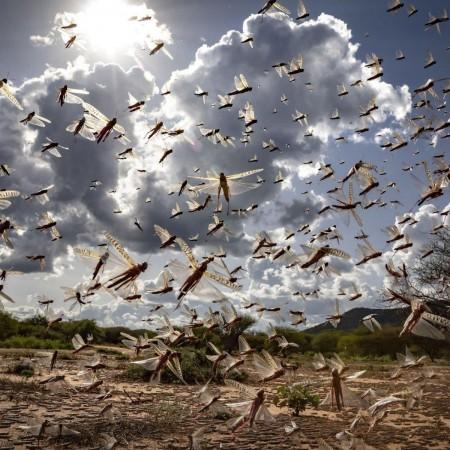The worst swarms of locusts have decimated vast crop fields in Rajasthan, Punjab, Maharashtra, Gujarat, Madhya Pradesh, and Uttar Pradesh, endangering the basis of human civilization.

The desert locust, which moves in huge groups, called swarms, is deemed as the most deadly migratory pest globally. A single swarm spreading over one square kilometre can include up to 80 million locusts. The need for action is evident as locust swarms can travel 18 to 300 miles on a particular day, thus quickly moving from one country into another.
The desert locust attacked India via Pakistan in April, leaving behind a trail of destruction in around five states.
Onlookers said the swarm, which entered India from Pakistan, was about two to three kilometres long.
Now, let's understand how swarms form and what can break them apart
Generally, an insecticide is used to control the locust. Either sprinkled from the ground or aerial vehicles, swarms can be targeted in comparatively short periods. However, this has clearly led to some environmental concerns.
ALSO READ: India must handle locust menace proactively
According to a report in the World Economic Forum, the so-called biological control mechanisms look more hopeful. "Natural predators such as wasps, birds, and reptiles may prove effective at keeping small swarms at bay. However, for managing more established swarms, newly-developed targeted microbial biopesticides, such as the fungus-based "Green Muscle", offer a larger-scale solution," read the report.
Constraining locust swarms is no simple task. And the larger the swarms, the more complex the job becomes. Prevention is likely the most reliable medicine, but this entails keeping a very keen eye out. Remember, it only takes three locusts to make a swarm.
Drones to fight locust menace

For the first time, drones and planes will be used to combat the locust menace in the state of Rajasthan, BR Karwa, project director, Agricultural Technology Management Agency said earlier.
A few days back, Union Aviation Minister Hardeep Singh Puri tweeted: "Using technology to help our farmers. Several regions of our country have been struggling with attacks from Locust swarms. In order to help combat this menace with technological innovations @MoCA_GoI has allowed use of drones for anti locust operations with adequate safeguards."
Several videos shared on social media platforms showed a massive swarm of locust damaging crops while farmers are striving to push them away.
Locust Attack in Jaipur ?
— Srinivas M.D(AIIMS) ? (@srinivasaiims) May 25, 2020
#2020 isn't it too much already ?
pic.twitter.com/PJxdKDQGER
Locust??? attack at Jaipur (recent video)
— @CoronaWarriors?? #StayHome LP? #FeedNeedy?? (@PotholeWarriors) May 25, 2020
They destroy crops within seconds leading to food scarcity
Govt should take immediate steps by fumigating , spraying chemical waters, insecticide to kill these. Locust ??? pic.twitter.com/YHkMqHid9Z














